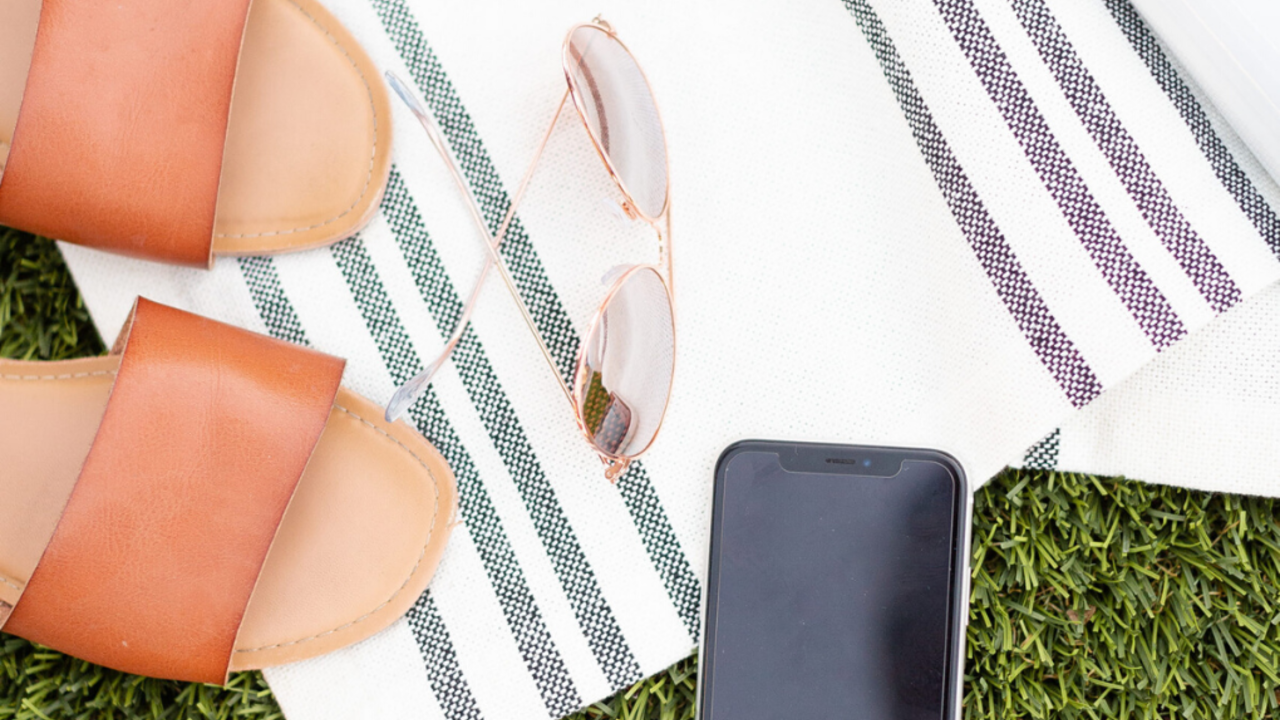How to choose a safer sunscreen
Jun 08, 2020
So you might be starting to wonder about the safety of your sunscreen, and you have good cause to be wondering this.
I've put together this quick guide (based on data and recommendations from the Environmental Group www.EWG.org ) to help you choose a safer sunscreen that poses fewer health concerns to you and your family helping you know what to look for and what to avoid.
Grab your downloadable quick guide HERE for you to reference down the road.
INGREDIENTS TO AVOID
Oxybenzone: Widely used chemical active ingredient. It is a skin sensitizer and potential hormone disruptor that may be harmful to both children and adults. Despite the known toxicity concerns about oxybenzone and the fact that it has been found in almost all Americans, the ingredient remains in a majority of non-mineral sunscreens.
Vitamin A (retinyl palmitate): An antioxidant used not only in sunscreens but also commonly found in other skincare and anti-aging products. According to the results of government tests, retinyl palmitate speeds the development of skin tumors and lesions on sun exposed skin and, therefore, should be avoided in daytime products.
Fragrance: The term “fragrance” can include a blend of nearly 4,000 ingredients. Due to a loophole in cosmetic regulations, companies are not required to disclose the ingredients they use in a fragrance blend and may simply include the term “fragrance” on a label.
Some common ingredients in fragrance blends include phthalates, which have been shown to disrupt hormone activity, and botanicals, which may cause skin sensitization or allergic reactions. Consumers should choose products that disclose their fragrance components or choose a fragrance-free option.
INGREDIENTS TO LOOK FOR:
Zinc oxide: Mineral-based active ingredient allowed for use in U.S. sunscreen products. Often referred to as physical blockers that reflect UV light, but the zinc oxide and titanium dioxide used in sunscreen products are similar to non-mineral ingredients in providing UV protection by absorbing UV rays.
Avobenzone: An oil-soluble ingredient used in sunscreen products to absorb the full spectrum of UVA rays
Mexoryl SX: A good UVA filter with few safety concerns.
PRODUCTS TO AVOID
Sprays : The danger of inhaling ingredients in sunscreen sprays is high and many contain ingredients that are harmful to lungs or internal organs.
Powders: As with sprays, powders increase not only the risk of inhalation, but also the possibility of talc being present. Talc ingredients can be questionable, some have been shown to contain asbestos.
SPF above 50: High SPF sunscreens not only overpromise protection but, according to the Food and Drug Administration, they may also overexpose consumers to UVA rays and raise their risk of cancer.
PRODUCTS TO LOOK FOR
Cream: Typically better protection, without the inhalation concern.
Broad-spectrum protection: “Broad spectrum” is a claim, defined by the EPA, that is used on products intended to provide coverage from both UVA and UVB rays. However, the bar to being able to use that claim in the U.S. is low. Even products that may tout their broad-spectrum coverage may not adequately protect users from UVA rays. For example, a shirt protects equally from UVA and UVB rays.
Water resistant: There are many marketing claims found on cosmetics that have no legal basis or standard definition, including: natural, hypoallergenic and “free of….” However, the term water resistant is regulated by the FDA. It has a set of standards and testing procedures that require testing a sunscreen for SPF only after a tester has spent 40 or 80 minutes in a pool or tub.
Consumers should be aware that no sunscreen is truly waterproof, and sunscreens should be reapplied according to the product’s directions.
SPF to suit your needs 15-50: Sunbathers often assume they get twice as much protection from SPF 100 sunscreen as from SPF 50. But the extra protection is negligible. Properly applied SPF 50 sunscreen blocks 98 percent of UVB rays; SPF 100 blocks 99 percent. When used correctly, sunscreen with SPF values between 30 and 50 offers adequate sunburn protection, even for people most sensitive to sunburn.
High-SPF products require higher concentrations of sun-filtering chemicals than low-SPF sunscreens do. Some of these ingredients may pose health risks when they penetrate the skin and have been linked to tissue damage and potential hormone disruption. Some may trigger allergic skin reactions.
If studies showed that high-SPF products were better at reducing skin damage and skin cancer risk, the extra chemical exposure might be justified. But they don’t, so choosing sunscreens with lower concentrations of active ingredients – SPF 30 instead of SPF 70, for example – is prudent.
WHAT TO DO NEXT?
1. GRAB YOUR DOWNLOADABLE QUICK GUIDE TO SAFER SUNSCREEN HERE
I'm often asked what sunscreen I use...
2. CLICK HERE TO SEE THE SUNSCREEN THAT I USE
Data based on articles from wwwEWG.org
Ready for things to feel just a little easier?
If you’re tired of feeling “on edge,” always bracing for something to go wrong, or wondering why you still don’t feel like yourself… you’re not alone.
My Stop Waiting for the Other Shoe to Drop guide gives you tiny, doable shifts to help your body exhale again...without adding more to your plate.



